#Travel East Turkey
Text
source, kaynak:@nevzatboyraz44
https://instagram.com/nevzat.boyraz44
#türkiye#doğa#travel photography#travel destinations#travel#manzara#view#natural#europe#africa#discover artists#discover turkey#discover explorer#discoverchina#discourse#explorer#east express#beirut explosion#explore#beautiful post#post video#tumblr milestone#blokhaus#bloke finds chilling ‘death’ message etched inside his double pane shower screen and everyone’s saying the same thing#turkish islamic art#turkish decorative arts#artvin turkey#viral photo#viral#videography
118 notes
·
View notes
Text
Mount Nemrut
I’d been wanting to see this place for about 10 years but most travel advisories warned people off it for the better part of the 2010s (that has since changed). I was recently planning a trip to Bulgaria (to see Ville, of course) and was suddenly struck by a wave of inspiration to take the plunge and travel to southeastern Turkey, so I am glad to say I can finally check this place off my bucket list :)
These are the ruins outside of what is assumed to be a royal tomb erected by Antiochus of Commagene, a Greco-Iranian kingdom, during the 1st century BC. The tomb itself is yet to be uncovered due to the sheer amount of loose stones covering the tumulus.
This is such a fascinating place, it straight up gave me similar vibes to the Fellowship seeing the Argonath in LOTR. I hope to come again and be able to watch the sunset from the top of the mountain 🥲

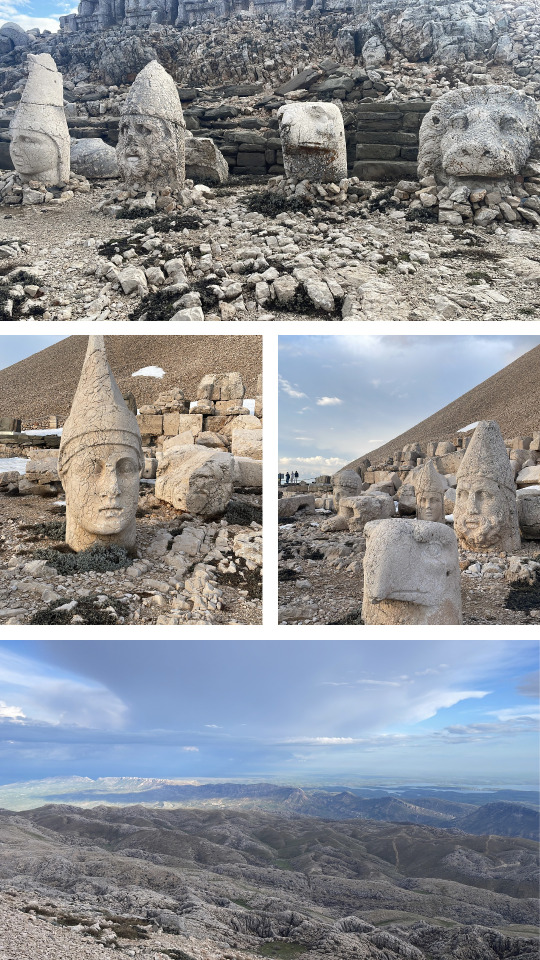
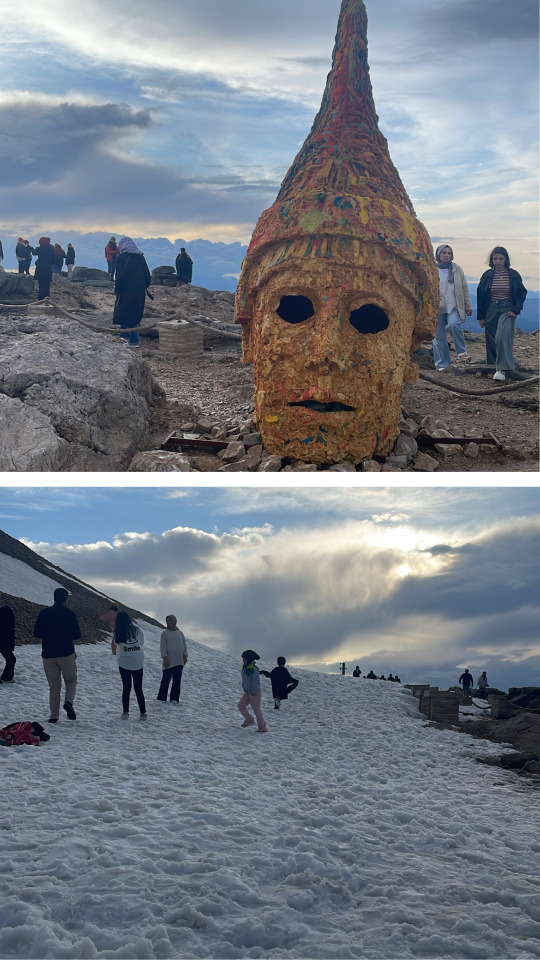
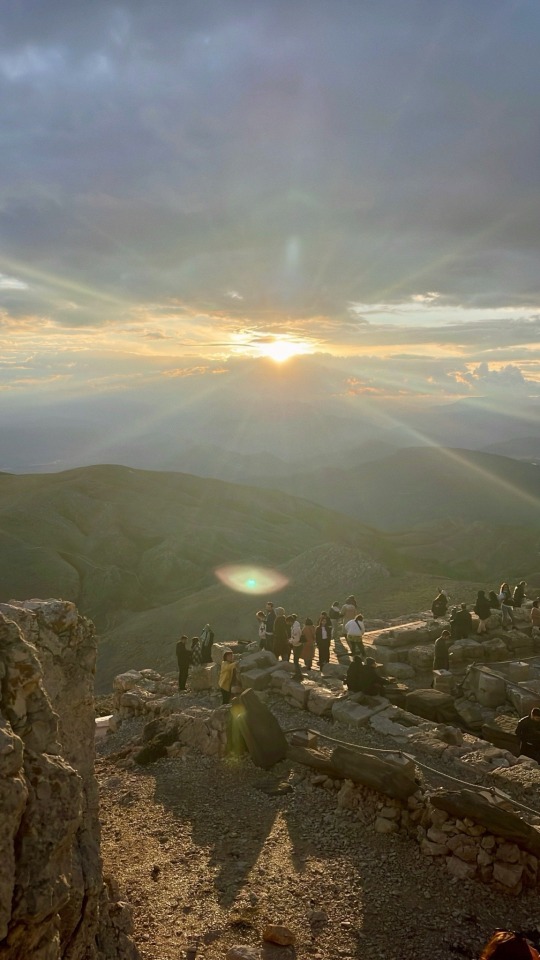
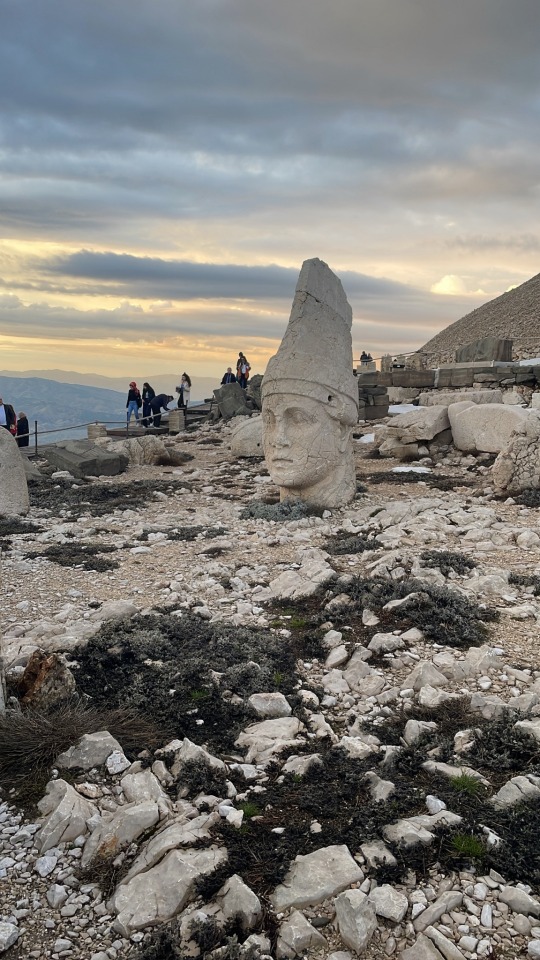
#travel#turkey#turkiye#kurdistan#Mount Nemrut#Nemrut Dağı#photography#middle east#archaeology#history#ancient greece#ancient persia#hellenistic#hellenic deities
6 notes
·
View notes
Text
8 Lovely Walkable Cities + FREE Premium GPS Travel App
As we inch away from the age of pandemic and international travel rebounds, many of us are now planning our next vacation.
During the pandemic lockdown, many of us have developed interest to explore our lovely neighborhoods on foot. If you are looking for inspiration, here are some of my favorite walkable cities.
Tbilisi, Georgia: The streets of Tbilisi are lined up with many chic eateries and…

View On WordPress
#Africa#Asia#Busan#Europe#Georgia#Germany#Hoi An#India#Istanbul#Middle East#Morocco#New Zealand#Oceania#Queenstown#Rothenburg ob der Tauber#Shimla#South Korea#Tbilisi#Travel#Turkey#Vietnam
2 notes
·
View notes
Photo

#Bulgarian Church of Sveti Stefan#Iron Church#Istanbul#Turkey#Middle East#Architecture#Interior#Travel
3 notes
·
View notes
Text
Not to be emo about being Kurdish on main again or whatever but like I am so fucking tired of this shit
#everything ever is happening in everywhere but the south. watch something terrible happen while my immediate family travels back there#and beyond that my heart is fucking. hurting for everything happening in the literally everywhere else#idk what the hell's going on with my family in the east (iran)#my family in the north (turkey) escaped the earthquakes entirely by accident while visiting my family in the south (iraq)#i have 0 family in syria but that's the place I'm hurting for most#literally no one will leave syria alone much less west kurdistan alone
4 notes
·
View notes
Link
Turkey Travel Guide: Everything You Need to Know
1 note
·
View note
Text
Astro obs part 9
🐌 The planets in your 12th house indicate your sleeping style:
Sun in 12th house - their sleep schedule is extremely messed up; for them, daylight hours = nighttime hours and vice versa, so they have trouble being themselves during the day; their true self comes out at night
Moon in 12th house - goes to sleep very late; full moons have a special effect on these people; their intuition is more clear at night; as kids, they probably slept a lot with their mother
Mercury in 12th house - loves texting/calling people late at night; they might journal their thoughts before sleep because they overthink a lot and it helps to clear their mind or maybe they just like to relax by reading a book at night
Venus in 12th house - cares a lot about getting their "beauty sleep"; sleeps with sleep masks on, buys expensive bed lingerie, skincare night routine might be very important; loves sleeping in general lmao
Mars in 12th house - enjoys working out before going to sleep, can go to sleep angry because they tend to get into conflict more at night than during the day
I have Uranus in 12th house and i can be both a light sleeper or a heavy sleeper, depending on where i am. For example, when i'm traveling, during the first night i wake up several times, but from the second night on i sleep like a baby lmao. Another thing would be that i can't sleep in a quiet car but i don't have any problem sleeping during a thunderstorm
🐌 Mars in fire signs (Aries, Leo, Sag) and Mars in 3rd house individuals love riding motorbikess
🐌 While Mars in 9th house peeps would probably love to go on a world tour on their motorbike. The sign ruling their 9th house represents the countries they would love to visit (i'm aware that some of these can only be visited by plane, take it with a grain of salt):
♈ in 9th house: Ireland, Poland, Japan, Zimbabwe
♉ in 9th house: Cuba, Paraguay, South Africa, East Timor
♊ in 9th house: Denmark, Norway, Sweden, Iceland, Montenegro
♋ in 9th house: Canada, USA, Bahamas, Argentina, Slovenia, Madagascar
♌ in 9th house: Hawaii, France, Italy, The Netherlands, India, South Korea, Peru, Bolivia
♍ in 9th house: Switzerland, Mexico, Brazil, Chile, Vietnam
♎ in 9th house: Belgium, Portugal, China, Equatorial Guinea, Lesotho
♏ in 9th house: Panama, Spain, Turkey, Arab countries (Saudi Arabia, UAE), Palestine, Lebanon
♐ in 9th house: Finland, Lithuania, Romania, Tanzania, Thailand
♑ in 9th house: UK, Germany, Czech Republic, Australia, Camerun
♒ in 9th house: Greece, New Zealand, Philippines, Singapore, Sri Lanka
♓ in 9th house: Morocco, Tunisia, Egypt, Mauritius, Saint Lucia

🐌 I have a feeling Pisces Suns like to spend their time in a garage lmao. Mostly because their opposing sign, Virgo, would hate to spend time in a garage due to how dirty it can get.
🐌As a 7th house Sun who's been in love for almost a year now (haha, are we surprised, ofcours not; i'm not even in a relationship with him but ugh we're so perfect for each other), i realised that Sun in 7th house people tend to behave differently with their partner when they're in a healthy relationship vs when they're in a toxic one
Sun in 7th house in:
♈ Aries in a healthy relationship: empowers their partner, knows how to balance me time vs us time in a healthy manner, encourages their partner to take safe risks
♈ Aries in an unhealthy relationship: impulsive, impatient, selfish, dismisses their partner's feelings, often controlled by rage, prone to abusing their partner
♉ Taurus in a healthy relationship: veryyy generous (their love language is gift giving), accommodating to their partner's wants and needs, cooks for their partner
♉ Taurus in an unhealthy relationship: stubborn af, hard to please, focused more on the material gain from their partner rather than the love they share
♊ Gemini in a healthy relationship: curious, always lightens the mood of their partner by cracking up tons of jokes or telling them funny stories, knows that communication is key to everything so they're not afraid to discuss serious topics, teaches their partner a lot of random stuff
♊ Gemini in an unhealthy relationship: superficial, doesn't have a problem moving on from their partner to another person in a matter of seconds, if they're still in school/college, then they prioritize studying over their partner
♋ Cancer in a healthy relationship: nurturing, knows how to balance babying their partner vs being babied by their partner, emotionally vulnerable, feels safe enough to present their partner to their family early on in the relationship
♋ Cancer in a unhealthy relationship: if they don't trust their partner, they tend to become emotionally closed off to hide their deep sadness; defensive, but if their partner attackes them, then they'll hide, worries excessively, avoids presenting their partner to their family
♌ Leo in a healthy relationship: treats their partner like the king/queen they are, keeps their ego in check so it doesn't interfere with the relationship, if they've got artistic talents (music, acting, art etc.), they'll show their love for their partner by performing in front of them
♌ Leo in an unhealthy relationship: egocentric, shows off their partner/relationship too much out of pride, often feels entitled in the relationship and wants to be put on a pedestal by their partner
♍ Virgo in a healthy relationship: selfless to a healthy degree, remembers every lil detail from every casual conversations with their partner just to please them, remembers every important date and plans ahead for it, takes care of their partner when they're sick
♍ Virgo in a unhealthy relationship: critical, overfixates on past hurts and mistakes that their partner made in the relationship (often times their partner doesn't even remember those things because they're usually not that serious), loves their pets more than their partner
♎ Libra in a healthy relationship: romantic, charismatic, truly values their partner and the relationship with them, acts fair in the relationship, teaches their partner lovingly about the importance of honesty, truth and a healthy give and take dynamic in a relationship
♎ Libra in an unhealthy relationship: doesn't prioritize the relationship; instead, they flirt with others despite being in a relationship, emotionally detached, cold and calculated in their current relationship
♏ Scorpio in a healthy relationship: loyal, loves their partner deeply and intensely, but without suffocating them, keeps their partner's secrets like they're a locked safe box with no public access
♏ Scorpio in an unhealthy relationship: obsessive, manipulative, seeks to dominate their partner, displays stalkish behaviour in the relationship, liar
♐ Sagittarius in a healthy relationship: exposes their partner to various cultures, belief systems and philosophies to expand their mind and form their own opinion on certain topics, loves freely but is still able to maintain a long-term relationship, improves their partner's mood, usually brings an element of surprise and excitement to the relationship
♐ Sagittarius in an unhealthy relationship: travels in order to avoid dealing with their partner, parties a bit too much, doesn't take the relationship seriously
♑ Capricorn in a healthy relationship: loves their partner in a mature, serious and secure manner, doesn't shy away from improving their partner's social status and/or career if they can, discusses plans for the future (getting married, having kids, adopting pets, buying a house) with their partner early on in the relationship, they make time for their partner, despite the fact that they're busy most of the time
♑ Capricorn in an unhealthy relationship: displays no emotions or physical affection in the relationship, has a hard time communicating their thoughts with their partner, settles in a relationship for the wrong reasons (money/kids/safety/"i'm getting old and i need to have my life established"), prioritizes work/career over their partner
♒ Aquarius in a healthy relationship: flexible, makes their partner's dreams and aspirations come true (whether they're related to the relationship or not), has got a very open-minded attitude towards their partner's opinions, lifestyle and identity, takes the time to become friends firsts with their future partner because they value a relationship built on solid foundation (often times their partner is also their best friend), knows how to balance couple time vs time with friends
♒ Aquarius in an unhealthy relationship: displays wishy-washy behaviour, emotionally detached, prioritizes their friends over their partner, seeks online validation from strangers and acquaintances to fulfill their needs
♓ Pisces in a healthy relationship: sensitive to their partner's emotions, knows how to balance wearing their heart on their sleeve vs hiding their emotions in unfavourable circumstances, always honest with their partner
♓ Pisces in an unhealthy relationship: prone to drown their relationship problems and sorrows in alcohol, drugs and meds for mental health issues, runs away from problems instead of dealing with them with their partner, displays dishonesty to a fault, prone to self-sabotage
#astro#astro community#astro placements#astrology#astro observations#astro posts#astro notes#astro blog#astroblr#astrology notes#astrology observations#natal chart#sun in 7th house#sun in 12th#12th house#mars in 3rd house#mars in 9th house
1K notes
·
View notes
Text

#table#istanbul#restaurant#cafe#dinner#travel#turkey#chair#east#oriental#seat#turkish#furniture#street#empty#object#exterior#wall#culture#wooden#day#wood#nobody#style#eatery#food#home decor#relax#painting#interiors
0 notes
Text
I've now reached the last of the main list of Cinderella stories from Cinderella Tales Around the World. The book is nowhere near over, though: after this it goes into the various "subtypes" of Cinderella, such as Donkeyskin.
The last few "official" Cinderella stories in this book are from Mexico and Chile. I was disappointed not to see more South American versions, and particularly that there were none from Brazil for @ariel-seagull-wings. But the Donkeyskin tales later in the book do include a Brazilian version, which I look forward to sharing!
Meanwhile...
*As in the versions from the Philippines, the heroine is named Maria in all three of these Latin American tales.
*The Mexican version is called Maria Cenzia, or "Cinder-Mary." The title character is a homeless orphan who lives in an ash-hole belonging to a household of black Moorish witches. They eventually discover her, take her in as a servant, and send her to the river with a black sheepskin, ordering her to wash it until it's white. But a lady appears and magically does the task for her, then gives her a magic wand to grant her wishes and puts a shining star on her forehead. When the jealous daughter of one of the witches sees this, she takes a black sheepskin to the river too, but the lady puts an ugly growth on her forehead instead of a star. Maria later uses her magic wand to give herself finery to wear to church and to give herself wings to fly home before the witches can catch her. She loses a shoe, of course, which leads to her marriage to the prince. But then the witches turn her into a dove with a magic pin. Yet one day, her father-in-law the king finds her and takes out the pin, breaking the spell, and when all is revealed, the witches are burned at the stake.
*The two Chilean versions, Maria the Cinder-Maiden and Maria the Ash-Girl, are nearly identical to each other and very similar to Maria Cenzia too. Maria persuades her father to marry a seemingly-kind widow with a daughter of her own, but is abused afterwards. She has a pet cow, which the stepmother spitefully has killed, but inside its body Maria finds a magic wand. She then has to wash the cow's organs in a stream, but they fall in and are swept away. An old woman comes along and offers to get them for her, and in return Maria cleans her house and cooks supper for her; for this, the old woman gives Maria a shining star on her forehead. The next day the envious stepsister has her own pet cow killed, takes the organs to the stream, and loses them on purpose, but she shows the old woman no kindness, and so she receives a turkey wattle on her forehead instead of a star. Some time later, there's a ball at the royal palace. Maria uses her wand to give herself finery and a coach, and of course she loses a shoe, and the prince uses it to search for her. The stepsister binds her own foot with tight bandages to make the slipper fit, but either a dog or a parrot alerts the prince, and Maria is found.
*It's interesting that the motif of the heroine receiving a shining mark on her forehead (a star, a moon, or a jewel) is found in Cinderella tales from both Latin America and Iran, yet rarely seen elsewhere. My guess is that the motif originated in the Middle East, was brought to Spain by the Arabs, and then traveled from Spain to Latin America.
*This is probably as good a time as any to discuss another recurring theme I've noticed. While around the world it varies whether the heroine's abusers are punished, forgiven, or neither, it seems that when they are punished, the worst punishment usually falls on the (step)sister(s), not the (step)mother. Just look at the Grimms' version: the stepmother is Aschenputtel's main antagonist, and she abuses her own daughters too by forcing them to cut off parts of their feet, yet in the end she goes unpunished, while her daughters' eyes are pecked out by birds. Yet even in versions where the (step)mother does get a punishment, the more brutal killing, maiming, or permanent disfigurement tends to be reserved for her daughter(s). Some versions try to justify it by portraying the sisters as abusing Cinderella more than their mother does, but most don't bother. In many versions, the simple "crime" of being Cinderella's rival is treated as if it were worse than being her chief abuser.
@ariel-seagull-wings, @adarkrainbow, @themousefromfantasyland
#cinderella#fairy tale#variations#cinderella tales from around the world#heidi ann heiner#mexico#chile#tw: violence#tw: racism
56 notes
·
View notes
Text
"Ancient World Fantasy" Reading List
(A little context to start. If you just want book recs, scroll on down to the first image.)
As I’ve been getting into RuneQuest (Wikipedia link), one striking component of the culture and community surrounding the game is that they’re very into the lore of its fictional world, Glorantha. I’m saying this as a comparison to a game like D&D, where the game is spread across tons of settings with no real sense of obligation to keep things in line with earlier editions.
Glorantha’s canon and worldbuilding has been going on since it was published in 1978 without, as far as I can tell, any big reboots. Which means that, unlike D&D, where people are bringing in all kinds of influences and doing direct adaptions of Jane Austen books and whatever, the RuneQuest game remains pretty tightly tied to the original setting. (There have been some exceptions. But not many!)
But since I run games for people who have ADHD or aren’t interested in studying up, I’ve been looking at all kinds of inspiration to drop into the game. Here are 20 novels that are roughly “ancient world” or “Bronze Age” like RuneQuest and deal with people interacting with strange gods, tight communities, and a world without fast overland travel or transferal of information.
I’m presenting them alphabetically by author’s last name.
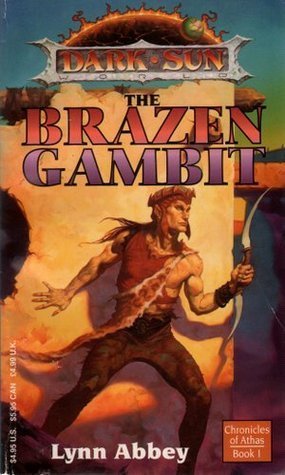

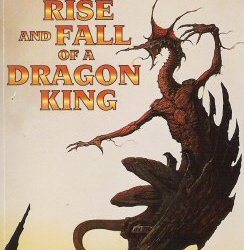
The Brazen Gambit, Cinnabar Shadows, The Rise and Fall of a Dragon King by Lynn Abbey
I'm sorry for starting this post off with licensed RPG novels, but these are good! And I don't mean "good for licensed RPG novels." I've read tons of them, and most are so bad! But these are actually fun. Good character development in a sword-and-sorcery world. It's also an ecological apocalypse world, with godlike beings oppressing common folks, leading to a lack of technological advancement and knowledge of the past.
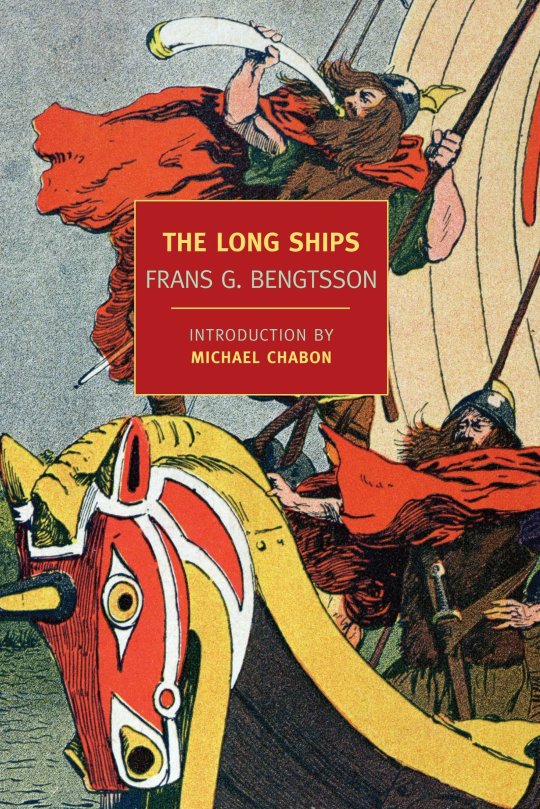
The Long Ships by Frans G. Bentsson
Written in the 1940s as a series of novellas, these stories take you on a tour of the Viking-era world, from Europe to the Middle East and beyond. Like a bunch of books on this list, this places them post-Bronze Age, so they're not officially "ancient world." But it gives a big spread of cultures, from the more clan-based Vikings to the bustling metropolises of Turkey. And it doesn't place any of them on any kind of linear advancement scale or whatever other gross way people "rate" cultures.
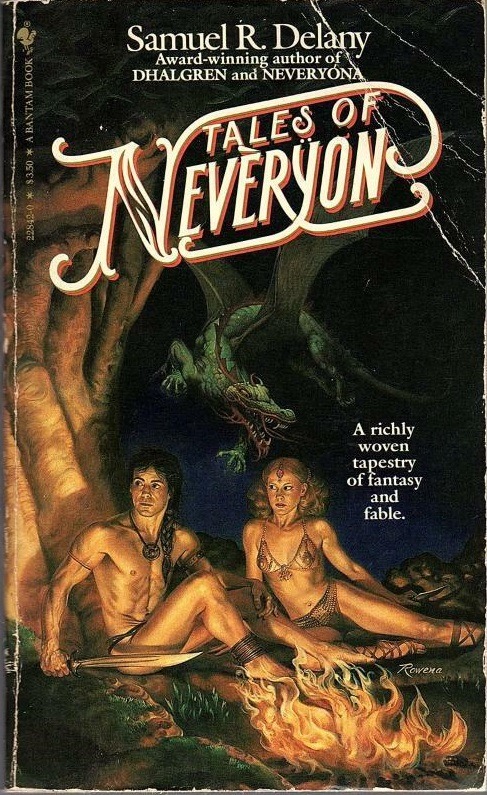

Tales of Nevèrÿon and Neveryóna by Samuel R. Delany
The master of weird sci-fi and gay historical novels, Chip Delany also wrote a fantasy epic. And it rules! Set on pre-historical(ish) Earth, these books describe the stories that maybe inform the myths we tell today? Dragons and slave revolts! A sort of "What if Game of Thrones was good?" series. Lots of good stuff about how people learn and how understanding expands.
I'm not listing the third book only because it's also a historical look at New York during the AIDS epidemic. It's an amazing book! But it strays from the "ancient world" aesthetic.
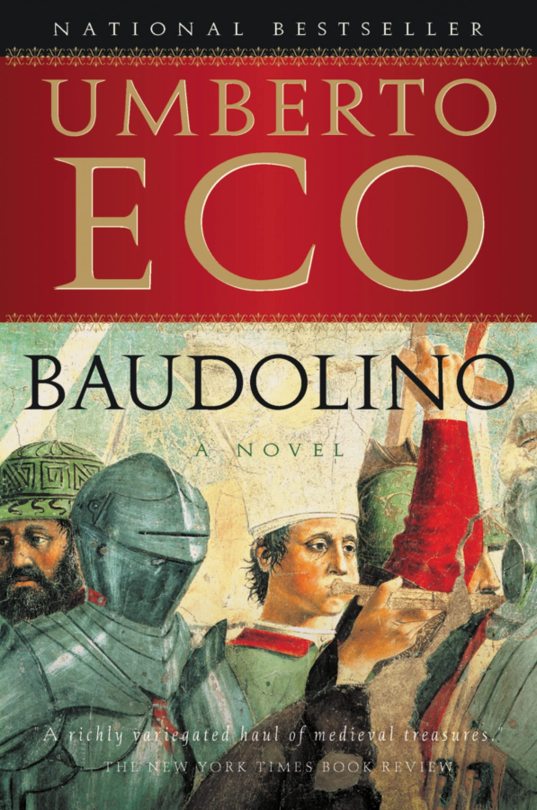
Baudolino by Umberto Eco
Another novel expressly set after the Bronze Age (this one starts in the 12th century). BUT it's about Medieval people's interaction with the knowledge they inherited from the past, specifically the myth of Prester John and the works of Herodotus.
I think I keep putting books like this on the list because roleplaying in a fantastical ancient world is not too far off from how Medieval people might have worshipped and referenced works from ancient Rome and non-European places.
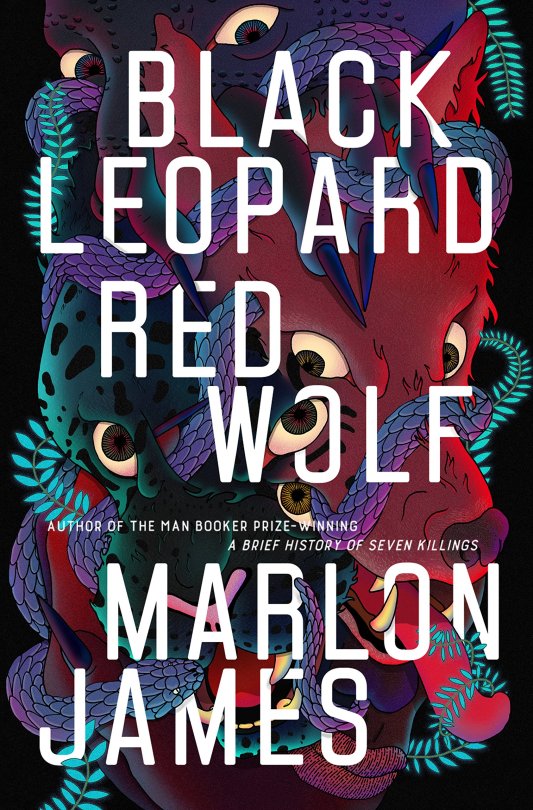
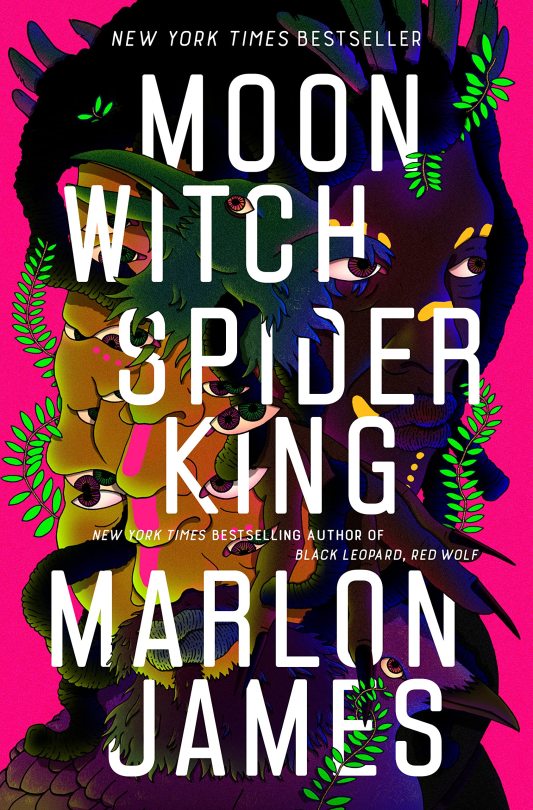
Black Leopard, Red Wolf and Moon Witch, Spider King by Marlon James
One of our best living writers! These are fantasy novels expressly set in a fantastical version of ancient/Medieval Africa. The books explore the same events from multiple points of view and are full of cool magic, awesome spirit combat, and a vast number of places and cultures that actively deconstructs most games's portrayal of fantasy Africa as a homogeneous place.
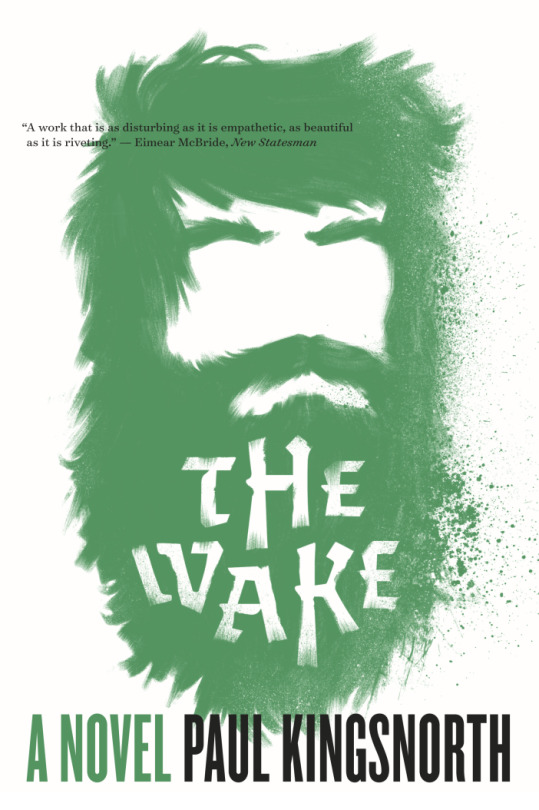
The Wake by Paul Kingsnorth
I think Kingsnorth has been outted as a sort of eco-fascist? I totally believe it, so feel free to skip this one. It's a historical novel set in England in 1066, as the Normans invade from France. It's written in a faux Middle English language and focuses on the lower classes and how they try to resist the invasion. A good reminder that "Medieval culture" (and especially the Renaissance as a time that "culture advanced") is often based on certain classes of society, such as rich people and/or men.
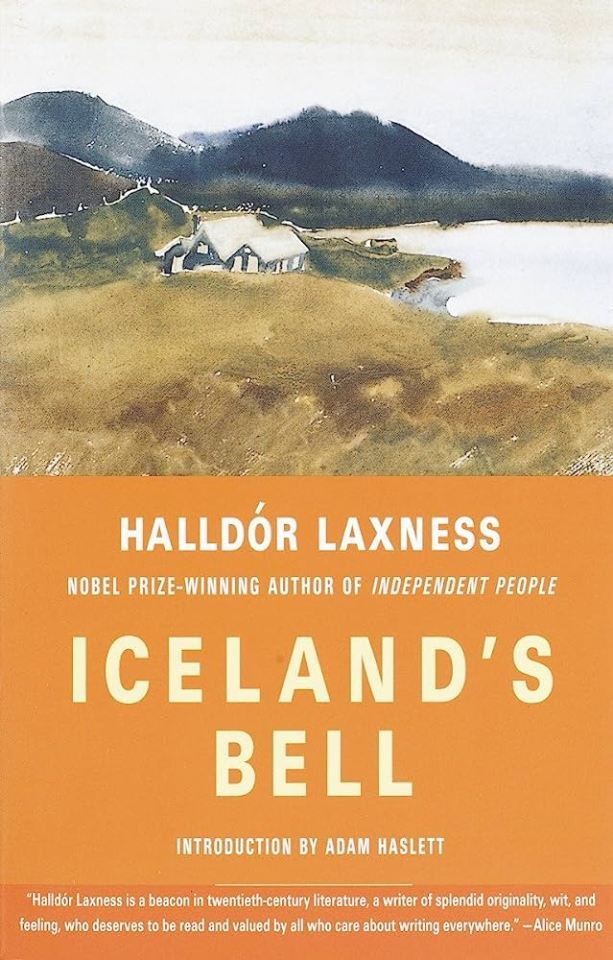
Iceland's Bell by Halldór Laxness
Speaking of how class intersects with technological advancement, this book is set in the 18th century, but it focuses on Iceland at a time when it was ruled by Denmark, and the lower classes there were under an enforced poverty. It's a book about how a rich Icelander was trying to recover the stories of his people in order to create a sense of national identity and resistance. But it's also a story about how a destitute man acts like a total weirdo when he's not allowed to fish in his own waters and is cut off from understanding his place in history.
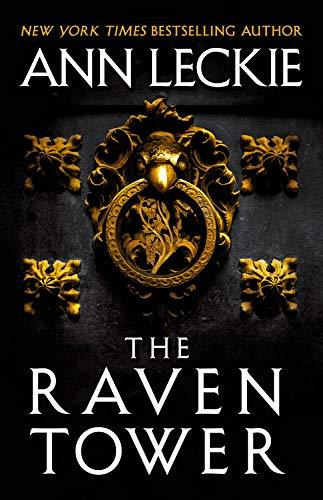
The Raven Tower by Anne Leckie
A big part of RuneQuest is people interacting with and enacting their gods. That's what this book is about! And it's about the strange vertigo that comes to people when they try to interact with the impossible timelines that gods exist on. Very good stuff.
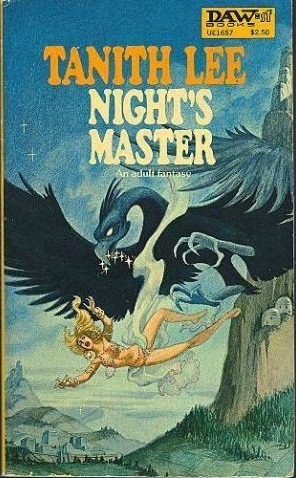
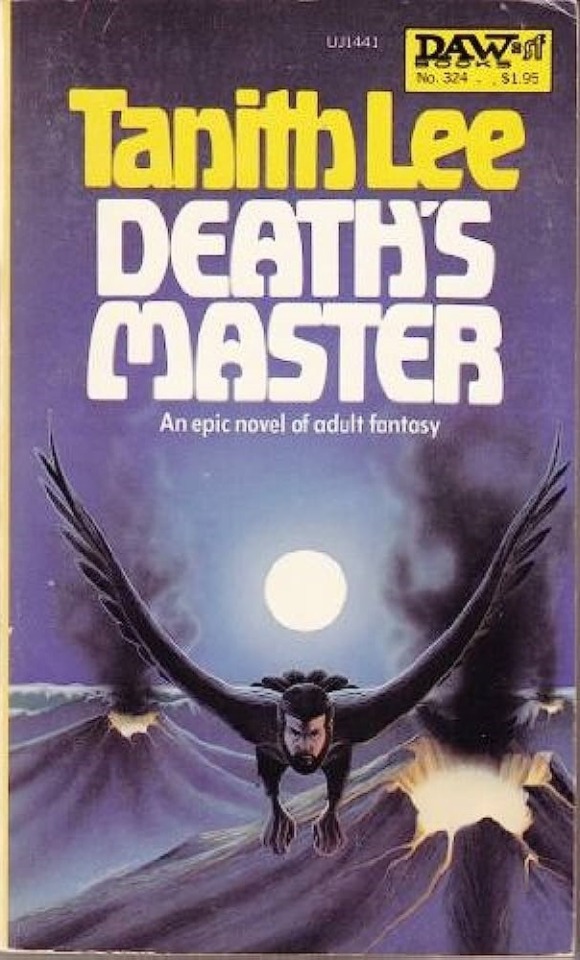
Night's Master and Death's Master by Tanith Lee
Ostensibly set on Earth back when it was flat and demons roamed the world, which is basically RuneQuest. Sort of like a series of hornier, gay bibles? With lots of gender fuckery, fun sex, and cool monsters.
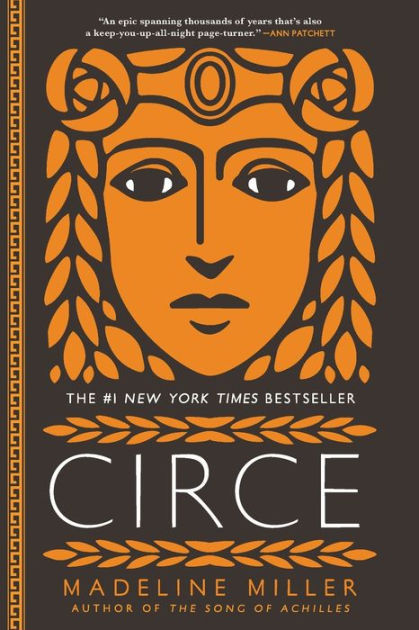
Circe by Madeline Miller
The story of the witch from The Odyssey, told from her point of view. Beautiful prose, tragic and beautiful characters, and a great share of mythical strangeness. Perfect if you want to learn how to run NPCs that are adversaries without being shallowly evil.

Ronia, the Robber's Daughter by Astrid Lindgren
Semi-Medieval again, but low class and vague enough that it could exist throughout ancient history. The daughter of a robber grows up in a tower full of robbers and generally has a wonderful time. Lots of weird monsters live in the woods, and there's a great starcrossed romance with someone from a rival robber gang. Perfect inspiration if you're running some cattle-raiding runs in RuneQuest; this is how to make robbers fun and sympathetic.
Read the book, watch the 1984 Swedish movie (which includes a great comedic scene of full-frontal dudity), and then watch the Studio Ghibli series.


A Stranger in Olondria and The Winged Histories by Sofia Samatar
Set in a world of pepper farmers and religious fanatics who worship a mysterious inscribed stone, these books do a great job of showing how people might interact with religion, rival cults, and mystery rites. It also portrays literacy and learning to read in places where it's gated behind social gatekeeping. And once again, the prose is beautiful.
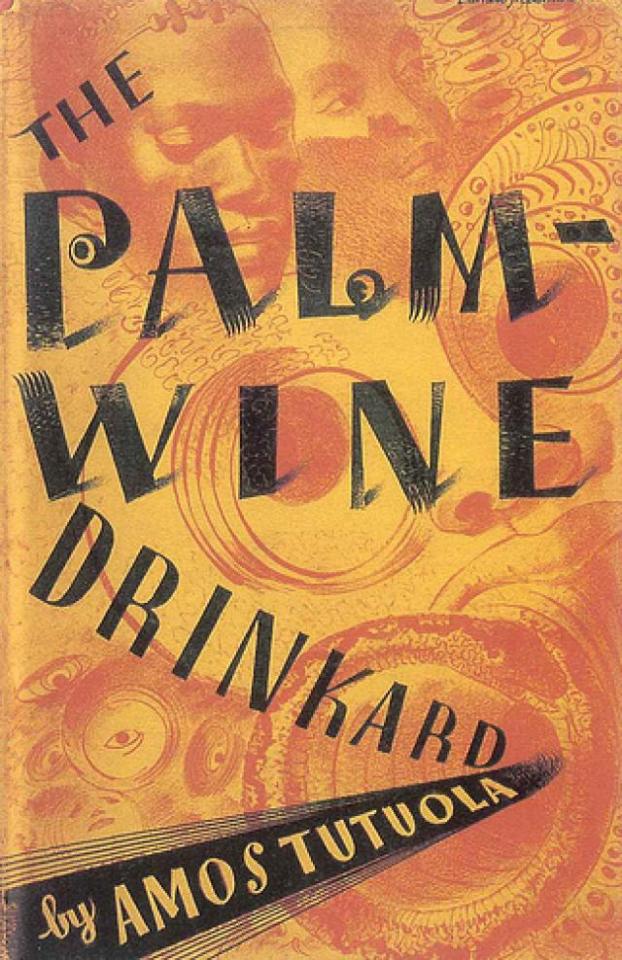
The Palm-Wine Drinkard by Amos Tutuola
The first African novel published in English outside of Africa, The Palm-Wine Drinkard is a funny, hallucinogenic story about getting drunk, stumbling through weird landscapes, and encountering fantastical spirits and people.
Tutuola also wrote My Life in the Bush of Ghosts, the inspiration for the famous(?) David Byrne/Brian Eno album. I haven't read it yet, but I'm keeping an eye out!
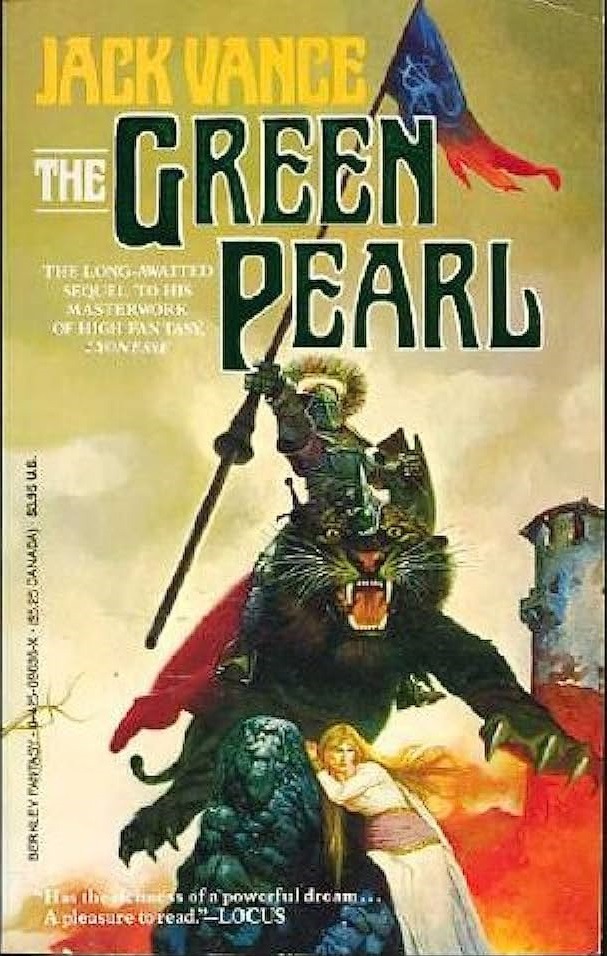
The Green Pearl by Jack Vance
This is a sequel to Lyonesse, which I haven't read because I love staring in the middle of things. Set around a mythical British Isles when Atlantis was still above the sea and part of the group of islands. Some great wizard shit, warring clans, romance, and a wizard whose name is fucking Shimrod (in case you need more convincing).
Those are my 20 novel recommendations! I'm gonna come back to add some nonfiction, comics, and myth resources for running games in fantastical ancient worlds. You can read SpeedRune, my ancient fantasy game, here.
222 notes
·
View notes
Text
@saliha-biri ne katkısı için teşekkürler
east express, Turkey 🇹🇷
ايست اكسبريس ، تركيا 🇹🇷
doğu ekspresi, Türkiye 🇹🇷
#organic music#nature#türkiye#doğa#manzara#travel photography#travel#travel destinations#view#natural#europe#africa#tren#tünel#cenk koray#aktris#east express#turkey 🇹🇷
89 notes
·
View notes
Text
When the new Maldives president, Mohamed Muizzu, stepped on a plane in late November for his first overseas visit since being sworn in barely a week earlier, he was breaking with a longstanding tradition in his country’s diplomatic practices.
Across party lines, Maldivian presidents have long made India their first port of call after being elected, in a reflection of the South Asian giant’s traditional influence on the idyllic Indian Ocean archipelago.
But Muizzu, who became president after a raucous and divisive anti-India campaign, chose to make his first official trip to Ankara, the capital of Turkey, showcasing an intent to diversify and reorient his country’s foreign policy.
At the heart of Muizzu’s efforts is a search for new friends at a time he has made it clear that he intends to pull away from India, according to analysts and sources within the Maldives.[...]
Soon after taking office, Muizzu doubled down on a campaign demand that India should withdraw troops from the Maldives. During the election campaign, his Progressive Party of Maldives (PPM) had claimed that India had plans to use the military base that it was building on the island of Uthuruthilafalhu near Male to take over the country.[...]
Turkey and the Maldives are increasingly also aligned on key geopolitical challenges — they have both strongly criticised Israel’s war on Gaza, while India has been more ambivalent, only recently joining calls for a ceasefire.
Yet, Muizzu’s Turkey visit is ultimately less about Ankara and more about distancing Male from New Delhi, said analysts. After his election but before he was sworn in, Muizzu visited the United Arab Emirates. Muizzu returned to the UAE for a second time, for the COP28 summit. In December, Maldives Vice President Hussain Muhammad Latheef visited China.
For India, this rift with the Maldives is a cause for anxiety — 50 percent of India’s external trade and 80 percent of its energy imports transit through Indian Ocean sea lanes. For Muizzu, the equation appears clear: If he wants India out, he needs others to come in. That, experts said, is what his trips are about.
21 Dec 23
43 notes
·
View notes
Photo

2 notes
·
View notes
Text
There is also a border with Egypt and the Mediterranean Sea. And, lest anyone forget, there is a maze of underground tunnels one recently-freed Israeli hostage calls "Lower Gaza" which presents numerous illegal exit opportunities.
As Ari Zivotofsky observes in the Jerusalem Post, a September 19, 2023, episode of the Palestinian television show Emigration claimed that, "in the past 15 years a quarter of a million young Palestinians left for abroad." In 2022, over 15,000 of them who lived abroad (having apparently escaped the "prison") willingly returned to it to celebrate the feast of Eid al-Adha.
This is not how prisons work.
The Middle East Media Research Institute (MEMRI) has been running a series on "Gaza Before October 7" refuting the "concentration camp" and "open-air prison" claims with pictures and videos. The first two episodes follow Palestinian "influencer" Yousef Alhelou as he travels around Gaza, showing off the top spots for tourists, including a gold market. Subsequent episodes include an Al-Jazeera feature of the economic boom in Gaza, Turkish television reports on the markets of Gaza, and various Arab media outlets covering the many sporting events in Gaza.
Hamas propagandists argue that Gazans are denied goods and services they are entitled to because of Israel's "land, water, and sea blockade," but Israel only blocks weapons from entering Gaza. Even after October 7, Israel has continued to supply electricity, food, and medicine.
What the "pro-Palestine" luminaries will never admit is that Israel has been forced into controlling Gaza's ports by the long history of weapons shipped there. In 2001, two vessels, the Calypso and the Santorini, were seized with weapons destined for Palestinian terrorists, and in 2002, a Palestinian ship called the Karine A was seized with 50 tons of Iranian weapons destined for Gaza. Since then, Israel has acted to prevent further shipments of weapons from reaching Gaza by sea. In 2007, after Hamas took over Gaza completely, Israel imposed an inspections regime and began more aggressively searching ships for smuggled weapons. Food and medicine are not prevented from entering Gaza.
Poor access to healthcare is another complaint about life in the Gaza "open-air prison." In April 2023, the Jerusalem-based anti-Israel activist group B'Tselem faulted Israel for preventing Palestinians from leaving Gaza in order to be treated in Israeli hospitals. But Israel treats plenty of Palestinians. Hamas leader Ismail Haniyeh sends his entire family to Israel for medical care. In 2013 his 1-year-old granddaughter was treated in an Israeli hospital; in 2014 his daughter was treated at Tel Aviv's Ichilov Hospital and his mother-in-law was treated at Jerusalem's Augusta Victoria Hospital; in 2021 his niece was treated at Ichilov Hospital. Just this month, it was reported that Haniyeh's grandniece was being treated at the Soroka Medical Center in Beersheva. But why should any Gazans be treated in Israeli hospitals? There are 36 hospitals in Gaza, many of which are run by foreign nations (Indonesia, Turkey, Jordan, European countries) serving a population of around 2 million.
Of course, hospitals in Gaza are dual-purpose buildings, offering both healthcare and camouflage for the entrances to Hamas's elaborate subterranean infrastructure. An IDF spokesman said that "Hamas systematically built the Indonesian Hospital to disguise its underground terror infrastructure." The Al-Shifa hospital, where IDF soldiers found a stash of rifles, ammunition, and ballistic vests, also sits atop a major tunnel junction. IDF soldiers recently found unopened boxes of medicine for Israeli hostages at the Nasser Hospital in Khan Younis.
If Gaza is a prison, Hamas is the jailer.
26 notes
·
View notes
Photo
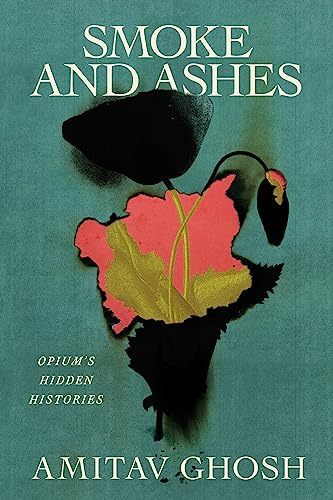
Smoke and Ashes: Opium's Hidden Histories
"Smoke and Ashes: Opium’s Hidden Histories" is a sweeping and jarring work of how opium became an insidious capitalistic tool to generate wealth for the British Empire and other Western powers at the expense of an epidemic of addiction in China and the impoverishment of millions of farmers in India. The legacy of this “criminal enterprise,” as the author puts it, left lasting influences that reverberate across cultures and societies even today.
Written in engaging language, Smoke and Ashes is a scholarly follow-up to the author’s famous Ibis trilogy, a collection of fiction that uses the opium trade as its backdrop. In Smoke and Ashes, the author draws on his years-long research into opium supplemented by his family history, personal travels, cross-cultural experience, and expertise in works of historical verisimilitude. Composed over 18 chapters, the author delves into a diverse set of primary and secondary data, including Chinese sources. He also brings a multidimensional angle to the study by highlighting the opium trade's legacy in diverse areas such as art, architecture, horticulture, printmaking, and calligraphy. 23 pictorial illustrations serve as powerful eyewitness accounts to the discourse.
This book should interest students and scholars seeking historical analysis based on facts on the ground instead of colonial narratives. Readers will also find answers to how opium continues to play an outsize role in modern-day conflicts, addictions, corporate behavior, and globalism.
Amitav Ghosh’s research convincingly points out that while opium had always been used for recreational purposes across cultures, it was the Western powers such as the British, Portuguese, the Spaniards, and the Dutch that discovered its significant potential as a trading vehicle. Ghosh adds that colonial rulers, especially the British, often rationalized their actions by arguing that the Asian population was naturally predisposed to narcotics. However, it was British India that bested others in virtually monopolizing the market for the highly addictive Indian opium in China. Used as a currency to redress the East India Company (EIC)’s trade deficit with China, the opium trade by the 1890s generated about five million sterling a year for Britain. Meanwhile, as many as 40 million Chinese became addicted to opium.
Eastern India became the epicenter of British opium production. Workers in opium factories in Patna and Benares toiled under severe conditions, often earning less than the cost of production while their British managers lived in luxury. Ghosh asserts that opium farming permanently impoverished a region that was an economic powerhouse before the British arrived. Ghosh’s work echoes developmental economists such as Jonathan Lehne, who has documented opium-growing communities' lower literacy and economic progress compared to their neighbors.
Ghosh states that after Britain, “the country that benefited most from the opium trade” with China, was the United States. American traders skirted the British opium monopoly by sourcing from Turkey and Malwa in Western India. By 1818, American traders were smuggling about one-third of all the opium consumed in China. Many powerful families like the Astors, Coolidges, Forbes, Irvings, and Roosevelts built their fortunes from the opium trade. Much of this opium money, Ghosh shows, also financed banking, railroads, and Ivy League institutions. While Ghosh mentions that many of these families developed a huge collection of Chinese art, he could have also discussed that some of their holdings were most probably part of millions of Chinese cultural icons plundered by colonialists.
Ghosh ends the book by discussing how the EIC's predatory behaviors have been replicated by modern corporations, like Purdue Pharma, that are responsible for the opium-derived OxyContin addiction. He adds that fossil fuel companies such as BP have also reaped enormous profits at the expense of consumer health or environmental damage.
Perhaps one omission in this book is that the author does not hold Indian opium traders from Malwa, such as the Marwaris, Parsis, and Jews, under the same ethical scrutiny as he does to the British and the Americans. While various other works have covered the British Empire's involvement in the opium trade, most readers would find Ghosh's narrative of American involvement to be eye-opening. Likewise, his linkage of present-day eastern India's economic backwardness to opium is both revealing and insightful.
Winner of India's highest literary award Jnanpith and nominated author for the Man Booker Prize, Amitav Ghosh's works concern colonialism, identity, migration, environmentalism, and climate change. In this book, he provides an invaluable lesson for political and business leaders that abdication of ethics and social responsibility have lasting consequences impacting us all.
Continue reading...
17 notes
·
View notes
Text
It is relatively well known that the Vikings were some of history's greatest travelers, traders, and mercenaries. Their reach extended far, as they are credited with finding North America and Greenland, and their names drove fear into the hearts of many European mainlanders. In actuality, their culture stretched as far east as Turkey and Russia, culminating in their direct influence in the creation of the Kievan State of Rus', lasting well into the thirteenth century.
18 notes
·
View notes